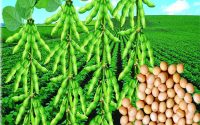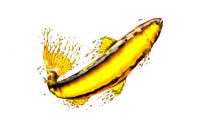Major Fats and Oils Industry
Fats and oils are used throughout the world for both food applications and industrial uses. They are consumed in butter, shortening, margarine, salad oils, and cooking oils, as well as in animal feeds, fatty acids, soaps, personal care products, biodiesel, paints (made from alkyd resins), lubricants, and greases. The sources of fats and oils include edible vegetable oils, palm oils, industrial oils, animal fats, and marine oils. Food applications account for the major share (about three-fourths) of the worldwide consumption of fats and oils. However, there has been a continued shift from food to industrial consumption, particularly in biodiesel. In Europe, this has been due mainly to the increased use of rapeseed oil for biodiesel production. In Central and South America, soybean oil has also increased in use for biodiesel as a result of country mandates. Also, industrial applications of other oil crops are being further studied and developed. Industrial uses of fats and oils are expected to continue to increase in Europe.
World consumption of fats and oils is driven mainly by Asia, which accounts for 48% of the world total. China and India together make up 30% of the world total. Chinese demand is mainly for soybean oil, followed by canola and palm oils. India is a major consumer of canola oil, as well as palm oil and butter. Both countries expect continued strong growth. Indonesia and Malaysia also contribute to overall consumption, especially in palm oil demand.
The following pie chart shows world consumption of fats and oils:
The United States consumes about 10% of the world’s fats and oils, mainly in food uses such as salad and cooking oils, but also for nonfood purposes including biodiesel and fatty acids production. Central and South American consumption has also been growing mainly because of increased biodiesel production to meet biofuel mandate requirements. Europe as a whole is responsible for a significant part of demand (19% of world fats and oils consumption), but the end-use pattern varies from country to country. For example, Germany’s growth is driven by biodiesel use, while France continues to consume fats and oils primarily for food use. Both Africa and the Middle East are smaller consuming regions that primarily use palm oil.
Global production of fats and oils is led by Asia. Indonesia is the world’s largest producer, accounting for about 18% of total global production and 56% of the production of palm oil. China ranks second with about 14% of total world production of fats and oils in 2015, and is a larger producer of soybean and canola oils. Malaysia ranks third in world production because of its place as the world’s second-largest palm oil producer. India also produces large volumes of canola and butter. Overall, Asia accounts for about 54% of world fats and oils production in 2015.
Palm oil has become the world’s largest-volume vegetable oil produced and consumed, surpassing soybean oil in the mid-2000s. Southeast Asian countries, particularly Malaysia and Indonesia, continue to increase their acreage of palm trees and to replace older palm trees with higher-yielding tree varieties. Palm oil’s availability and relatively low cost has contributed greatly to its growth. Also, in regions such as the United States, consumption has increased through replacement of other oils such as soybean oil in edible uses for health reasons.
Soybean oil is the second most widely produced and consumed oil in the world. It is made and used extensively in the United States, Brazil, Argentina, and China. Its growth in North and South America has been supported by its use as a feedstock in biodiesel production.
Animal fats, including tallow and grease, butter, and lard, still account for a significant amount of global fats and oils production and consumption, although volumes have remained fairly steady or only slightly increased in recent years for health reasons (e.g., concerns regarding higher saturated acids or cholesterol content). Tallow and grease are produced in high volumes in the United States and are second in the United States (after soybean oil) in terms of oil or fat consumed. Tallow production is a by-product and depends on meat consumption such as beef, pork, or lamb.
A considerable amount of research and development is being done in the oilseed area, not only in developing new products, but also in improving existing oilseeds through genetic engineering. Examples include the development of high-oil corn; changing the fatty acid profiles of oils such as soybean, canola, and sunflower; and using genetic engineering to improve pest and herbicide resistance in certain crops, as well as to increase crop yields.



